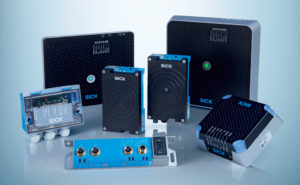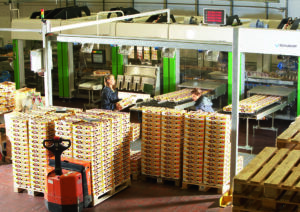Track and trace is all about ensuring transparency into a product’s origin and its path through the supply chain (and back, if necessary, as in the case of product recall).
Food companies, for example, are responsible for recalling unsafe goods and products in order to prevent contamination of the food chain. Recalls not only entail financial damage for companies, but are also damaging to brand reputation.
It is therefore essential to implement an appropriate traceability system that offers complete documentation of the product’s route through production, thereby allowing companies to minimize the scale of recalls. Read more about this at SICK Insight.
 There are many types of technologies that can help to accomplish this task, including 1D and 2D barcode scanners, OCR (Optical Character Reader), and RFID (Radio Frequency Identification). It is useful to have a wide range of automatic identification technologies that you know you can turn to, but this post focuses primarily on the benefits of RFID for track and trace in the supply chain.
There are many types of technologies that can help to accomplish this task, including 1D and 2D barcode scanners, OCR (Optical Character Reader), and RFID (Radio Frequency Identification). It is useful to have a wide range of automatic identification technologies that you know you can turn to, but this post focuses primarily on the benefits of RFID for track and trace in the supply chain.
There are several different ways that RFID can be used in track and trace applications. For one, if you consider a manually intensive inventory process of any kind, there is always the possibility of mistakes, miscalculations, missing information on orders, misplaced items, mixed up information, etc. In an effort to avoid situations like these, it often makes sense to identify inventory items automatically without any handwriting taking place. Pallets can be identified by having affixed tags pass into the sensing range of a reader’s antenna.
 If you are tagging at the pallet level, e.g., one tag per pallet, it could be ideal to have an RFID reader/antenna connected to the front of a fork truck or AGV (Automated Guided Vehicle). When the vehicle approaches the pallet, the read function is initiated and the information from the tag is sent over to the WMS (Warehouse Management System) automatically.
If you are tagging at the pallet level, e.g., one tag per pallet, it could be ideal to have an RFID reader/antenna connected to the front of a fork truck or AGV (Automated Guided Vehicle). When the vehicle approaches the pallet, the read function is initiated and the information from the tag is sent over to the WMS (Warehouse Management System) automatically.
As the product makes its way through production and distribution, its final destination (and intermediate destination) is also recorded by reading the same tag again with another fixed reader antenna. A timestamp could be added as well. With properly-designed software, the complete path and timing of product can be recorded and all order data in the master database can then be reconciled with no errors, minimizing the impact of a product recall.
RFID works extremely well in these types of applications due to the fact that direct line of sight, a requirement for optical identification systems, is not required. Alignment and focusing between tag and reader is also more forgiving. There are no moving parts and the tags can be read at distances up to a few meters. In addition, with RFID, data can be written and recorded directly to the tag on the item, which can reveal its progress and the timing of specific events.





